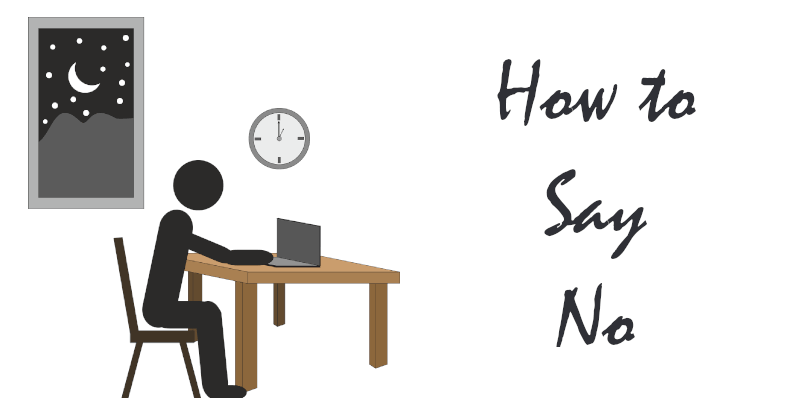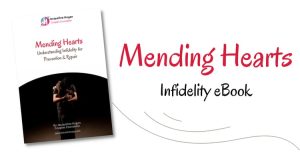Do you find it difficult or even impossible to say NO to a friend, family member, perhaps sometimes even your wife or husband? What about work colleagues or the boss?

That Dreaded Feeling
What do you feel when you say YES, when you really want to say NO?
Do you feel a sharp rise of anxiety as you imagine what would happen if you said NO?
Do you feel squirmish or ashamed because you have to think up an excuse or lie?
Then, after you say yes, you’re lumped with feeling bad anyway, because you have betrayed YOUR values and sacrificed YOUR time. Inevitably you feel disappointed in yourself and maybe even begin to criticise yourself for not having the backbone to say NO.
But its not easy is it!
Can it Get Any Worse?
It can, because now this thing you said yes to is on your mind and hanging over you until it’s done. And that could be weeks away!
Who needs that kind of stress!
There’s another problem too. Once you have said YES, its hard to say No for future things. The precedent has been set.
Problems Deepen Further..
It’s now easier to give in and say Yes in the future than to say No, unless there is a dramatic shift to break the established pattern.
In a recent book I read about the power of habit, the ability to say No, diminishes over time. Especially in a group setting or environment where saying No is unpopular and has negative consequences. It’s easier to keep saying yes, and keeping quiet.
But at what cost?
In history, saying Yes has cost countless lives.
How does saying ‘Yes’ to things you want want to do affect your relationship? Time with the kids? etc?

Taking Back Control
How would it feel if you had the ability to say NO in your life? What would it feel like to regain control?
Imagine right now, being able to say No?… Go on take 30 seconds right now and imagine it.
Your Reasons Why You Need to Say No
Would you feel confident? Would you feel a sense of relief, maybe a sense of power? A sense of personal authority? A sense of happiness and self-worth because you are looking after #1 – YOU first!?
Would you feel a sense of freedom that choice brings? Would that make you feel strong, resilient and resourceful?
What will it mean to your partner and relationship? More time for each other, more respect and equality in the relationship?
I hope so.
Here are 12 ways you can kindly and respectfully say No.
With Power Comes Great Responsibility!
Now before you take this list and start saying No to everything, it’s a wise idea to use the power of saying No within reason and in alignment with your current responsibilities, values and personal boundaries.
E.g. Saying No to picking up the kids after school tonight might have dire consequences. But saying No to picking up the mother-in-law from the airport next week could be on the cards.
The underlying theme here is about setting new boundaries, and gently making people aware of new boundaries respectfully.
But… You’ve Changed!
Establishing a new boundary may come as a shock to some people, as they will be used to the old boundary. The old habits and patterns they are familiar with will be shaken. Some people don’t cope well with change, so be prepared for a little resistance to start with. But hold your ground to establish your new firm boundaries. If you’re setting new boundaries in your relationship, talk with your partner about why you are setting them and get their support.
As your new ‘Saying-No Vibes’ become stronger the pendulum of power and choice will swing in your direction and it will become easier in the future with less resistance from those who experience your kind offering of ‘No Thanks’.
Better Yes’s = More Impact
The best part is, saying No to things, means you can say YES to more things you want to do. So its not about being a selfish negative Nancy. In fact it’s quite the opposite. Now you can say Yes to the things you believe in. The things that have greater meaning attached to them, for a cause you believe in.
So when you do show up to a ‘Yes’ event you show up with enthusiasm; you put the effort in and are happy to be there / do the work / be a part of it. And people will love you for it, because you’ll do an excellent job.
What are you most looking forward to saying ‘Yes’ to?
How will your relationship / family benefit?

How to Say No
- I’m sorry I’m busy.
- You don’t need to say what you’re busy doing. It’s no one else’s business. If asked, just ‘broken-record’ it. “I’m Busy”.
- Thanks for thinking of me. But It’s not for me.
- You sincerely appreciate the gesture, and firmly state you are not the right person for the job.
- I’m interested, but I’m already over committed.
- Another take on being busy. You’d want to do the task justice, saying No is the right thing to do.
- Unfortunately, that’s not something I can do at this time.
- Leaving an opening for another time is always an option to consider
- No thanks.
- Short, simple, good for follow up questions & combinations.
- I’m already booked.
- Booked infers you are in demand. It’s easier for them to try someone else.
- Maybe some other time.
- Casual, and keeps the door open for the future.
- I wish I felt differently, but I just can’t.
- It’s unlikely someone will question your feelings on a matter.
- I don’t think I’m the right person to help with that.
- They will want the ‘best person’ for the job.
- I’m sorry, I can’t help you this time.
- A softer let down. Keeping an opportunity open for the future.
- Let me check my availability… I’m sorry that doesn’t suit.
- Buying some time is handy to make a good decision.
- That’s not going to work for me.
- This statement gives you good coverage and reasons if required.
Related Resource: Rebuild Trust & Communication
Practice Saying No
Practice in front of the mirror, or somewhere private.
Feeling comfortable saying no, and having matching body language is key to show your sincerity. Someone with ‘power & control’ could sense you insecurity or fear and push your boundaries with follow up questions or other tactics to persuade you into a yes.
Having some practice saying no allows you to strengthen your stance when required with either combinations or the broken record treatment. Try it out and see what works for you.
Diversion Tactics
You can follow up your ‘No’ with helpful suggestions to get them on another line of thinking, and off your radar. Some suggestions include:
- Have you tried…
- Have you thought of…
- A good choice would be…
- Someone with skills in that area is…
- So & so will have a better idea than me.
- So & so is looking for an opportunity in that area. Check in with them.
Take the time to practice and adjust your approach to find out what works for you. You might find that different responses suit different people. It’s all part of adjusting your responses and body language to match the outcome you desire.





